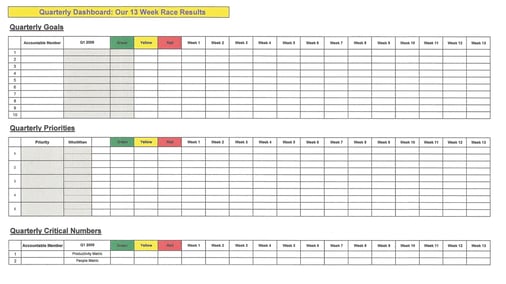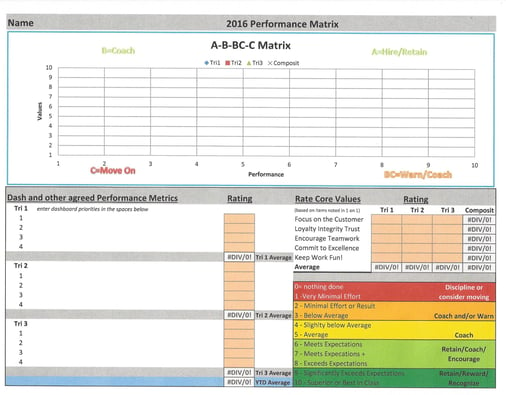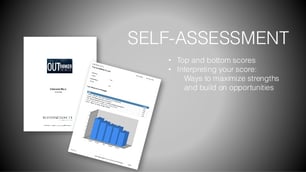 My dad was a private pilot. He owned his own airplane, a 1956 Cessna 172. The dashboard for his plane wasn’t as elaborate at the one shown here. He knew exactly what each meter meant and where it had to be to fly the airplane safely and get us where we wanted to go.
My dad was a private pilot. He owned his own airplane, a 1956 Cessna 172. The dashboard for his plane wasn’t as elaborate at the one shown here. He knew exactly what each meter meant and where it had to be to fly the airplane safely and get us where we wanted to go.
WHERE DO YOU WANT TO GO?
Happiness is a direction, not a place. ~ Syndey J. Harris
If happiness is a direction, how do you get everyone in your company moving in that direction?
It requires communication, a leadership team diligently deciding what direction the company is taking, every year, every quarter, establishing 3-5 year objectives and creating a 10-25 year BHAG.
These elements are part of our Strategic Discipline, the One Page Strategic Plan, and Scaling Up fundamentals we work to establish in our first two day private workshop with our customers.
How do you get your entire team with their oars in the water pulling in the same direction? The kind of Advantage Patrick Lencioni describes?
 If you could get all the people in the organization rowing in the same direction, you could dominate any industry, in any market, against any competition, at any time. Patrick Lencioni
If you could get all the people in the organization rowing in the same direction, you could dominate any industry, in any market, against any competition, at any time. Patrick Lencioni
― Patrick Lencioni, The Five Dysfunctions of a Team.
How One Construction Company Achieved It
One of our Gazelles coached businesses, a Pacific Northwest Construction Company, met with a group from their bank at their business. While there the owner gave the bankers a quick tour of their facilities. As the bankers passed through the business, they noticed something unusual. At every workstation, each employee had a dashboard. The dashboards shared their individual Success Criteria toward their positions accountability metrics, and their contribution to the company’s Quarterly One Thing.
They’d been impressed with the company’s performance, and one of the reasons for the meeting was to discover why they were doing so well, and how they might help further the company’s growth. Suddenly one and one made much more than two! The bankers not only offered to help the company further, they provided an improved financial package to ensure they would secure this construction company’s customer relationship for the future. They recognized a key ingredient in this company’s success was getting buy in from every individual in the business, and having them completely on board with their individual contribution to this company’s success.
Cascading Accountability – Individual Dashboards
Your company should have a One Thing Priority every year and quarter. For smaller companies an annual One Thing works.
Communicating your One Thing should be accomplished during company-wide meetings, reinforced during team meetings and again in your One On One Meetings.
At the beginning of every quarter/year, leadership should require their team to build an individual dashboard.
%201st%20Quarter%202013%20BS2.jpg?width=506&height=157&name=Prioities%20Dashboard%20Health%20(Doug%20Wick)%201st%20Quarter%202013%20BS2.jpg) There are many forms of dashboards for tracking and monitoring your company and an individual’s performance. I prefer building one in Excel, as I’ve shared with you in my battle with Acute Myeloid Leukemia. You can make the dashboard monthly or weekly. Or develop your own as we shared one of my customers did to start a new employee in, Dashboards – Starting a New Employee Right.
There are many forms of dashboards for tracking and monitoring your company and an individual’s performance. I prefer building one in Excel, as I’ve shared with you in my battle with Acute Myeloid Leukemia. You can make the dashboard monthly or weekly. Or develop your own as we shared one of my customers did to start a new employee in, Dashboards – Starting a New Employee Right.
Whatever dashboard form you make, ensure you and your team member can quickly see whether or not they are achieving by establishing success criteria as we shared in Increase Meetings Effectiveness With Success Criteria.  Whether it’s a weekly meeting with peers or a one on one meeting, you should be able to immediately see the progress you are making.
Whether it’s a weekly meeting with peers or a one on one meeting, you should be able to immediately see the progress you are making.
We shared this practice as one of the fundamental principles driving the Exponential Organizations in Increase Accountability with OKRs – Objectives and Key Results in 2014. If you’re not already doing individual dashboards with your team, you are at least 3 years behind, probably considerably more.
The article shares some of the characteristics of OKR’s Objectives and Key Results:
- KPI’s are determined top-down, OKR’s are determined bottom-up
- Objectives are the dream; Key Results are the success criteria a way to measure incremental progress towards the objective.
- Objectives are qualitative and Key Results are quantitative. OKRs are not the same as employee evaluations. OKRs are about the company’s goals and how each employee contributes to those goals. Performance evaluations, which are entirely about how an employee performed in a given period, are independent of OKRs.
- Objectives are ambitious and should feel uncomfortable. [In general, up to five objectives and four key results per initiative are optimal, and key results should see an achievement rate of 60-70%: if they don’t, the bar is set too low.]
OKR’s Objectives and Key Results
OKR’s Objectives and Key Results are very similar to the leadership teams company KPI’s established at the annual and quarterly meetings.
Dashboards for Individuals should take into account both the OKR’s reflecting the direction the company is moving, and monitor their key accountability metrics, which should be determined on their Job Summary Scorecard. When all this is achieved you have a measurement tool to move the business forward, evaluate individual progress, and when tied into your performance matrix, monitor each individual’s cultural behavior.
 Several of the companies I work with have successfully adopted these ideals and use them. Not all have individual dashboards that are visible like the construction company I shared here. I hope you can see the power this has on the individuals within your company, and how it clearly portrayed to observers the strengths of their organization.
Several of the companies I work with have successfully adopted these ideals and use them. Not all have individual dashboards that are visible like the construction company I shared here. I hope you can see the power this has on the individuals within your company, and how it clearly portrayed to observers the strengths of their organization.
If your business is searching for tools like these to achieve individual and company accountability on a grander scale, plan to attend Scaling Up Business Growth Workshop in Cedar Rapids, IA. We’ll share ideas on company and individual dashboards, and our Scaling Up and Strategic Discipline principles.
If you’re looking to learn how to develop dashboards for your business, contact dwick@positioningsystems.com. Or take our Four Decisions Needs Assessment to discover how your business measures against Scaled Up companies. Then we’ll contact you.
 Calibrate Your Outthinker Score
Calibrate Your Outthinker Score
Your businesses’ success depends on your ability to differentiate yourself. Next blog I’ll share a tool from Kaihan Krippendorff’s workshop. The Outthinker Score measures your level of competitiveness. The higher your score, the easier it will be for you to grow fast and profitable. Be sure to join me for the 8 P’s Assessment tool, next blog.






.jpeg?width=150&height=135&name=Hand%20with%20marker%20writing%20the%20question%20Whats%20Next_%20(1).jpeg)

